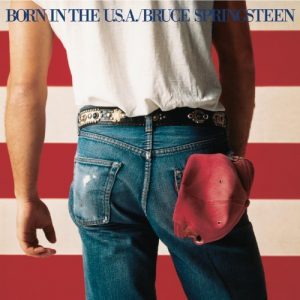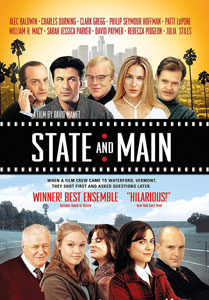With “State and Main” (2000), writer-director David Mamet delivers a satirical look at the making of a Hollywood movie, but it’s so lighthearted that it’s almost a love letter, too. The setting is incongruous with the absurd industry politics on display, as director Walt Price (William H. Macy) is shooting a historical film called “The Old Mill” in picturesque Waterford, Vermont, filled with locals with quirks of their own.
Worth a smile
This is totally a matter of taste, but I didn’t laugh at “State and Main.” I smiled, and it’s not difficult to watch, but the precise type of humor didn’t connect with me. A lot of scenes play like rough ideas rather than finely crafted gut-busters, surprising for the meticulous Mamet.
For example, starlet Claire (Sarah Jessica Parker) is appreciative of screenwriter Joe (Philip Seymour Hoffman) standing up for her, so before long she’s naked in his hotel room. Knocking on the door is sweet townie Ann (Rebecca Pidgeon), who has been connecting with Joe. Cue a scene of Ann barging in and Joe trying to keep her from going into the side rooms where Claire must be hiding. It’s amusing, but not memorably funny because the scene doesn’t add anything to the familiar premise. It’s ultimately tame.

“State and Main” (2000)
Director: David Mamet
Writer: David Mamet
Stars: Philip Seymour Hoffman, William H. Macy, Rebecca Pidgeon
And in contrast to Mamet’s delightfully unpredictable films such as “The Spanish Prisoner,” the path of “State and Main” is clearly paved. For instance, as soon as we learn that Bob Barrenger (Alec Baldwin) has a thing for underage girls, and that underage townie Carla (Julia Stiles) has a thing for this movie star, we know he’ll get into hot water. The specific problems he gets into aren’t inventive enough to be memorable, though.
“State and Main” – named after Waterford’s one intersection with a stoplight – satirizes not so much the technical process of moviemaking, but rather the internal politics of making a movie. Cast and crew on “The Old Mill” include both good-hearted and bad-hearted people, but Mamet has affection for all of these stereotypical people from the circles he moves in.
The farce gets broader
As the stakes get higher, the farce gets broader: A bag of money intended to pay off Claire so she’ll bare her breasts ends up playing a role in the Bob-Carla controversy. But the film doesn’t get funnier, it just gets closer to the end.
The most amusing subplot – and a rare example of “State and Main” exploring the creative side of moviemaking — is how Joe has to struggle to adapt his play, featuring a key metaphor-laden scene at an old mill, into a movie where no old mill is available for shooting. As the producers struggle with Claire’s refusal to go topless, Joe and Ann stumble upon the notion that the film is about purity, and therefore it’s better without the topless scene.

I wonder if “State and Main” is less funny because Joe is presented as a competent writer, and when we see shots from the film – renamed “The Fires of Home” to account for the lack of an old mill – it’s a competent production. On the other hand, I don’t know if I’d like a chronicle of the making of a bad movie much better.
If you’re looking for a film about the absurdities of filmmaking, you could do worse than “State and Main,” but I find it to be more of a light, forgiving trifle than a sharp and funny satire.

